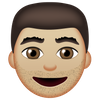Chinese New Year: There's an Emoji for That
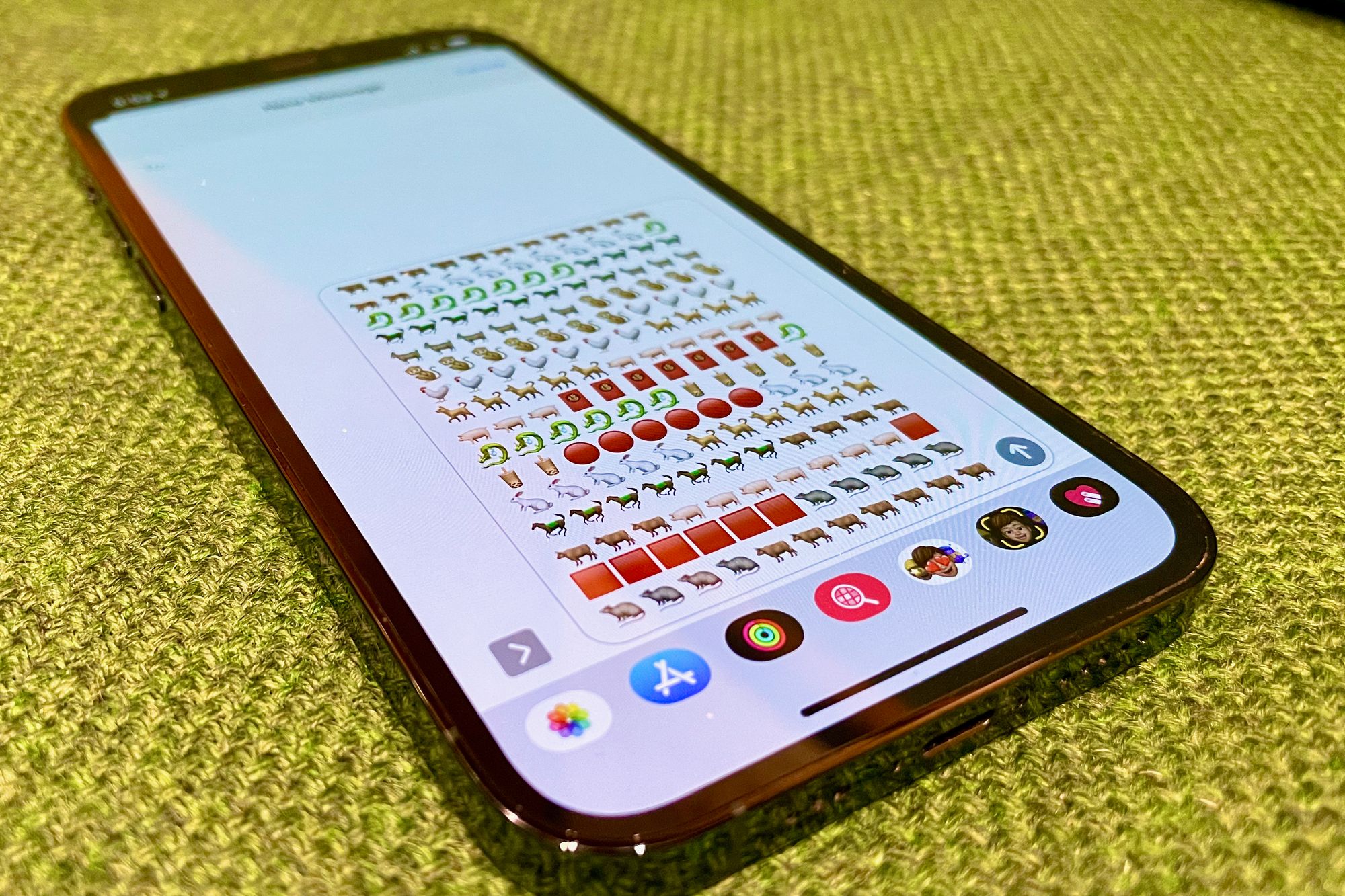
Happy year of the 🐂 Ox! Or is that the 🐄 Cow or 🐃 Water Buffalo? Either way, there's an emoji for that.
In 2021 Chinese New Year falls on February 12. This marks the end of Year of the Rat and the start of Year of the Ox. The order progresses as such:
- 🐀 Rat – 鼠, shǔ (子)
- 🐂 Ox – 牛, niú (丑)
- 🐅 Tiger – 虎, hǔ (寅)
- 🐇 Rabbit – 兔, tù (卯)
- 🐉 Dragon – 龙/龍, lóng (辰)
- 🐍 Snake – 蛇, shé (巳)
- 🐎 Horse – 马/馬, mǎ (午)
- 🐐 Goat – 羊, yáng (未)
- 🐒 Monkey – 猴, hóu (申)
- 🐓 Rooster – 鸡/雞, jī (酉)
- 🐕 Dog – 狗, gǒu (戌)
- 🐖 Pig – 猪/豬, zhū (亥)
There's a number of these animals are open to interpretation, often relating to the translation used, or the specificity of the animal.
Rat may be referred to as a 🐁 Mouse, Rooster as 🐔 Chicken, Pig as 🐗 Boar, and Goat as 🐑 Sheep or 🐏 Ram.
The Vietnamese Zodiac lists a 🐈 Cat instead of a Rabbit.
You might be thinking it's a coincidence that all of these animals are on the emoji keyboard, but it's not.
Chinese New Year Emojis 🔴
One emoji that is popular around Chinese New Year is 🧧 Red Envelope.
More commonly referred to as a Hóngbāo or Lai See, or in English as a Red Packet or sometimes Lucky Money, Emojipedia defines this as:
A red envelope, as gifted with money on Chinese New Year or on other joyous occasions, such as weddings, in Chinese and some other Asian cultures around the world.
Depicted as a red, vertical envelope with a gold design, typically featuring the Chinese character 福 (fú, “good fortune, luck, happiness"). Google’s design features the character upside down, indicating “good luck arrives.”
This is a relatively recent addition to the keyboard, approved in 2018, and now supported on all phone apps and operating systems.
The exact character that appears on the envelope varies, which is also true of red pockets in the physical world.
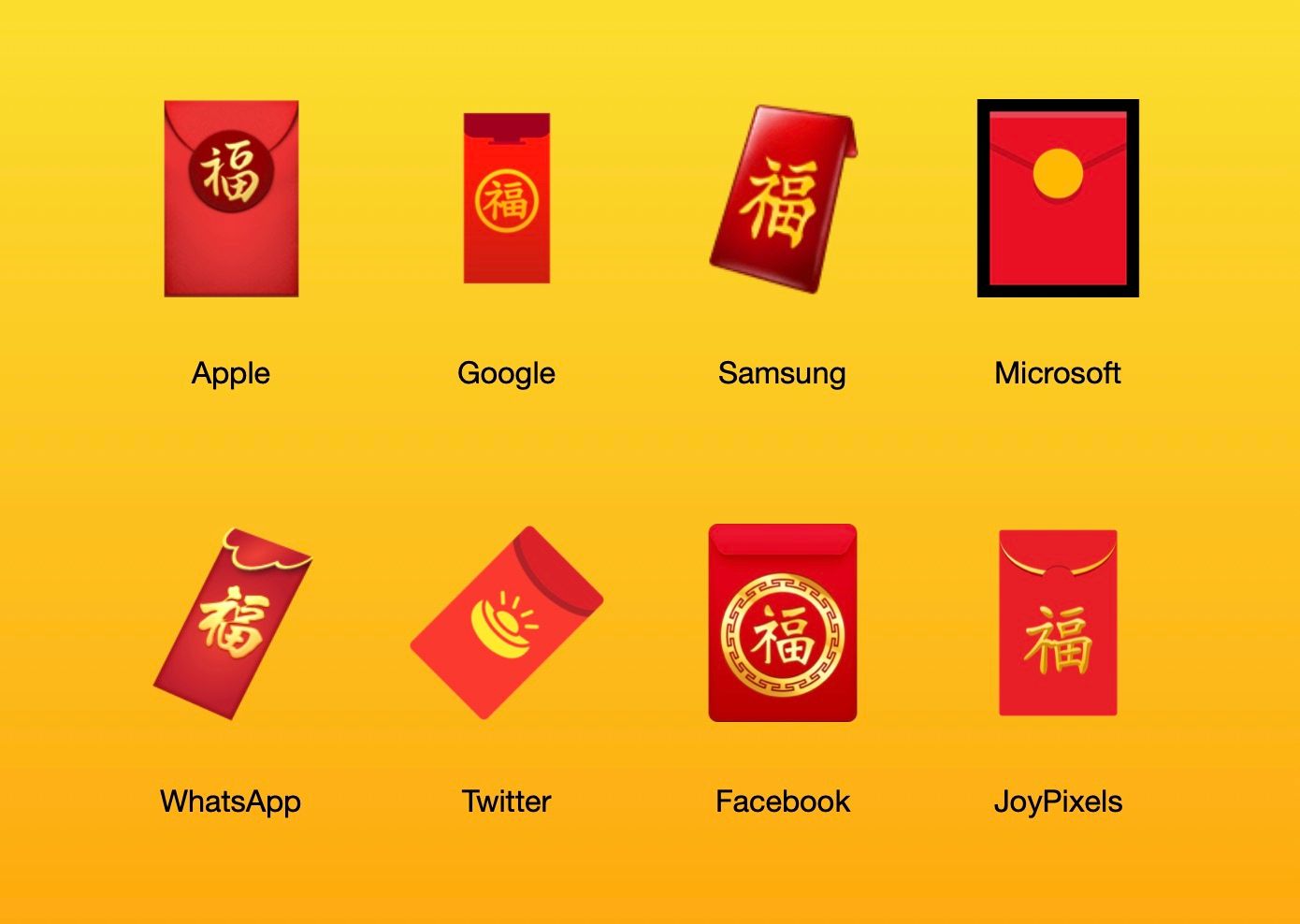
Another popular emoji at Chinese New Year is the 🧨 Firecracker. This one is found in many unrelated contexts, given it also resembles dynamite.
Other than animals of the Chinese Zodiac, commonly used emojis at this time of year include:
- 🍃 Leaf Fluttering in Wind
- 🍊 Tangerine
- 🥟 Dumpling
- 🌏 Globe Showing Asia-Australia
- 🐲 Dragon Face
- 🌑 New Moon
- 🎆 Fireworks
- 🏮 Red Paper Lantern
- 💰 Money Bag
- 🧋 Bubble Tea
Anything red is also popular, meaning these can serve a decorative purpose:
Animal Emoji Origins 📝
The first animals in the emoji set were included to make the Unicode Standard compatible with Japanese carrier emoji sets.
Each carrier in Japan had a slightly different set of animals available in emoji form, and so the Unicode Consortium standardized those which were available, with some ending up having two versions. That's why some animals have both a full body emoji, as well as just the head.
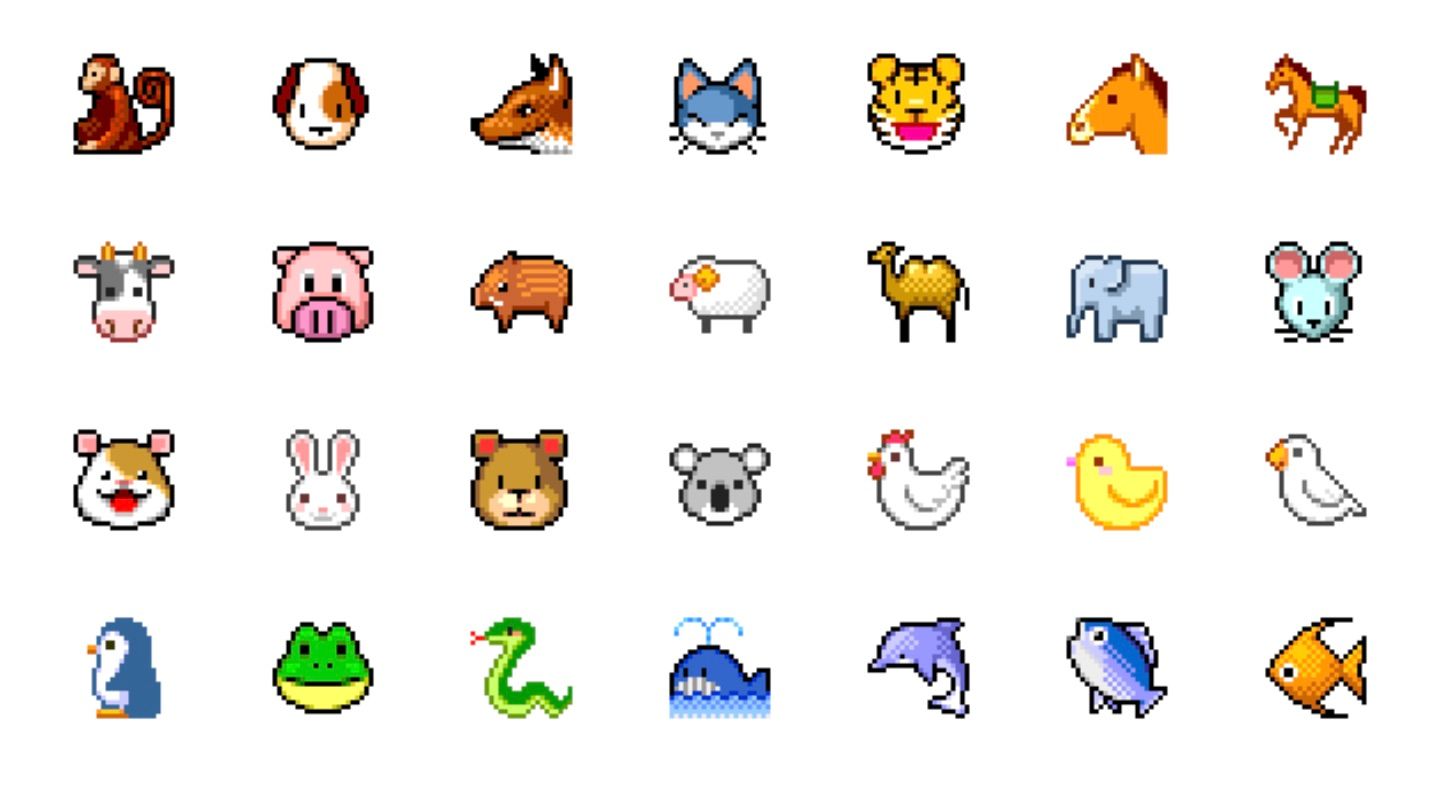
Animals such as the Rabbit and Snake were already in these sets, but not every animal of the Chinese Zodiac was available on Japanese phones at the time.
During 2008-2009 as the work was completed to include a set of Japanese emoji characters in the Unicode Standard, the case was made for additional animals to complete the various animals of the zodiac.
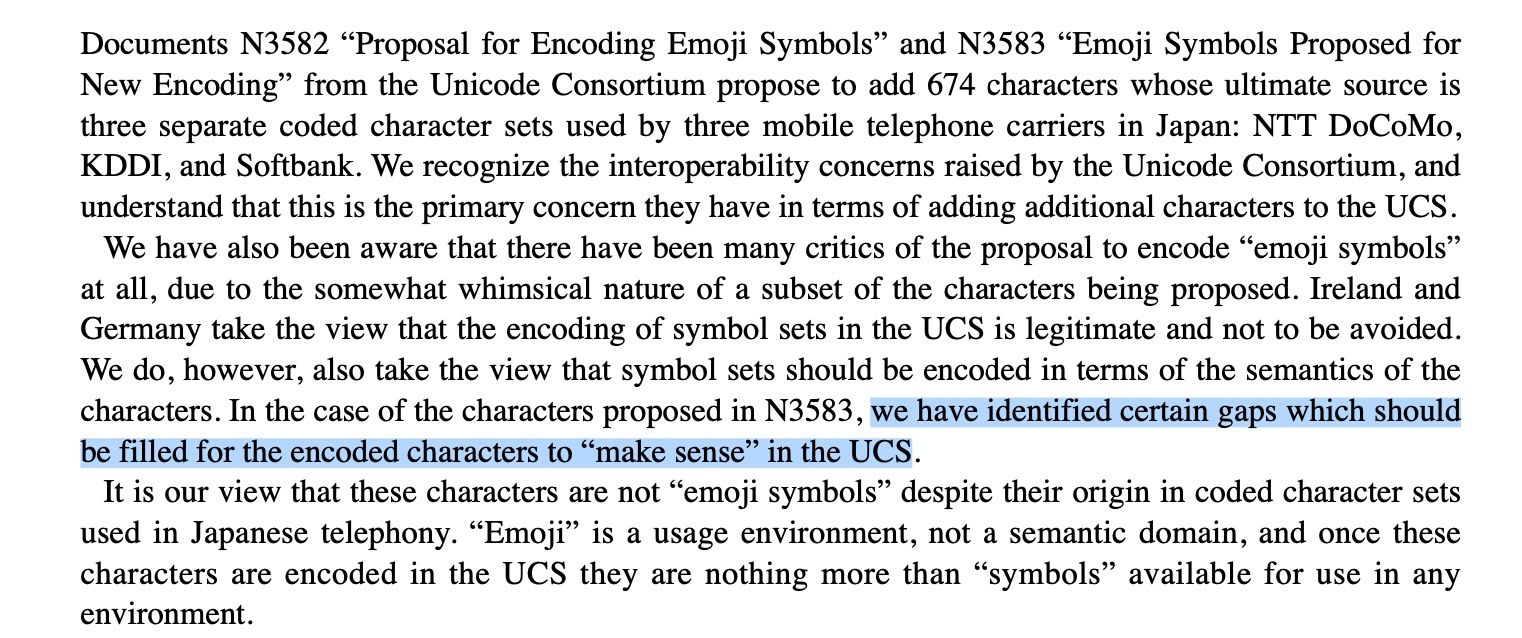
Partly as a result of this submission from the ISO Working Group, animals such as crocodile, sheep and rooster were approved by Unicode and are now available on emoji keyboards we all use today.
The first version of the Unicode Standard to provide global emoji support, version 6.0, was released in October 2010.
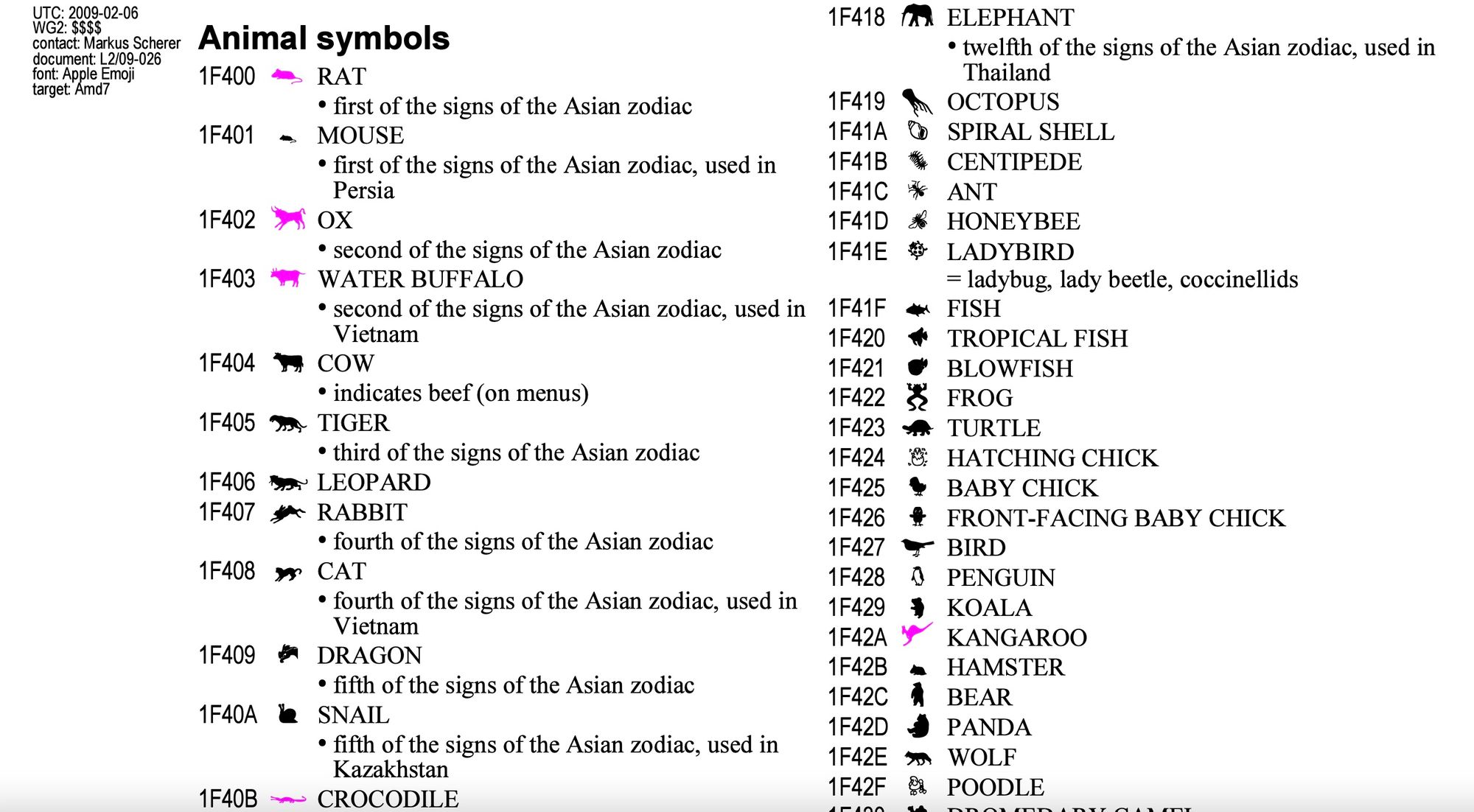
The process of submitting proposals for new emojis has been a continual work in progress, with various criteria added to ensure that any emoji submission provides sufficient value on the emoji keyboard before being approved.
Today's process is different to when emojis were primarily added for compatibility with existing phones on the market.
Animal Emoji Design 🐂
It used to be a quirk of Apple's emoji font that animals in the Chinese Zodiac had a realistic appearance, while many others took on a more cartoonish look.
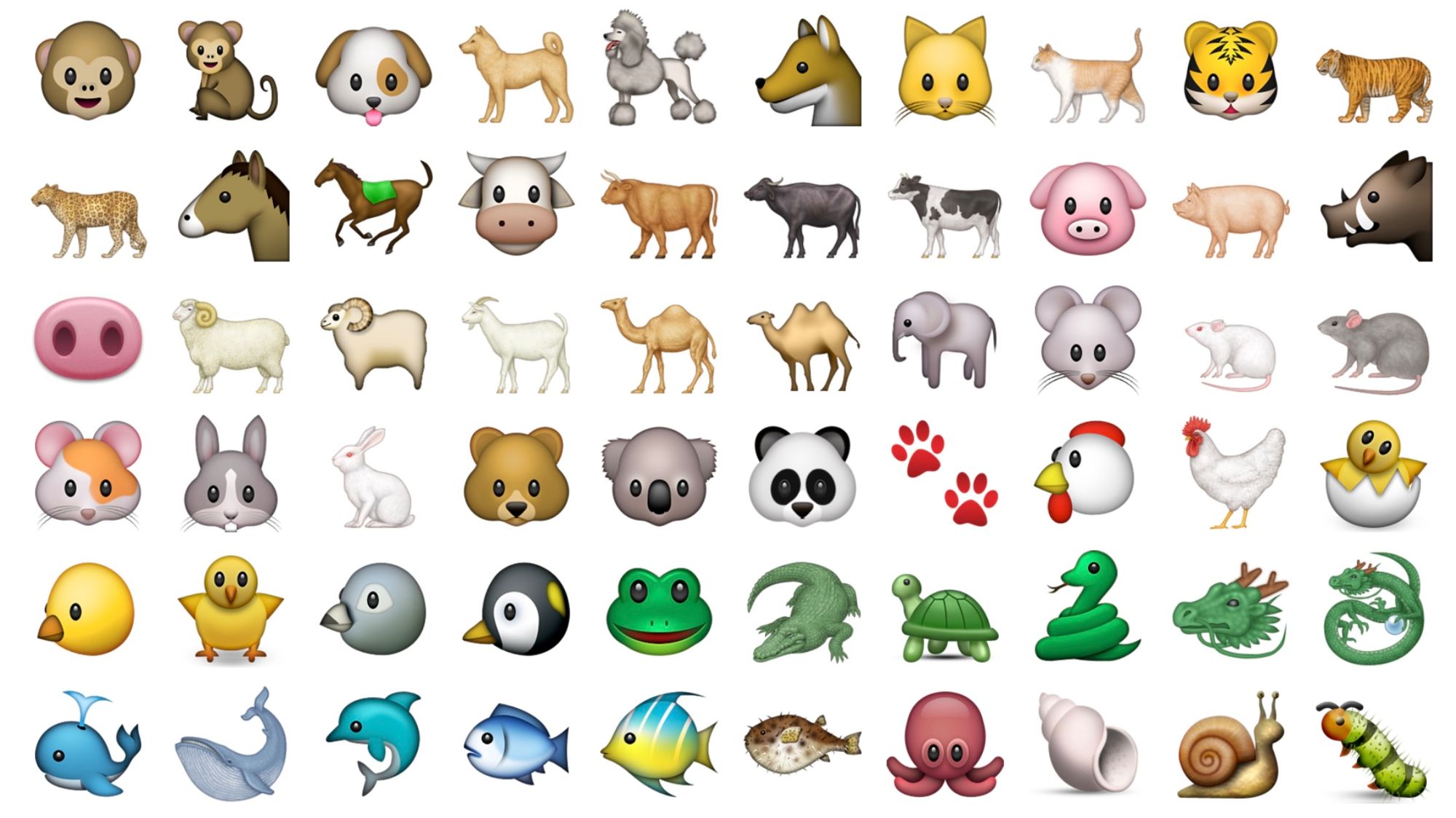
How much of this was deliberate to enable the full-body animals of Chinese Zodiac to look the same, and how much was an accident of history may not ever truly be known.
What is known is that multiple designers were involved in Apple's first emoji set, and a few distinct art styles can be noticed when scouring through the first designs.
More recent art from Apple has a more consistent style after a complete redesign in 2016.
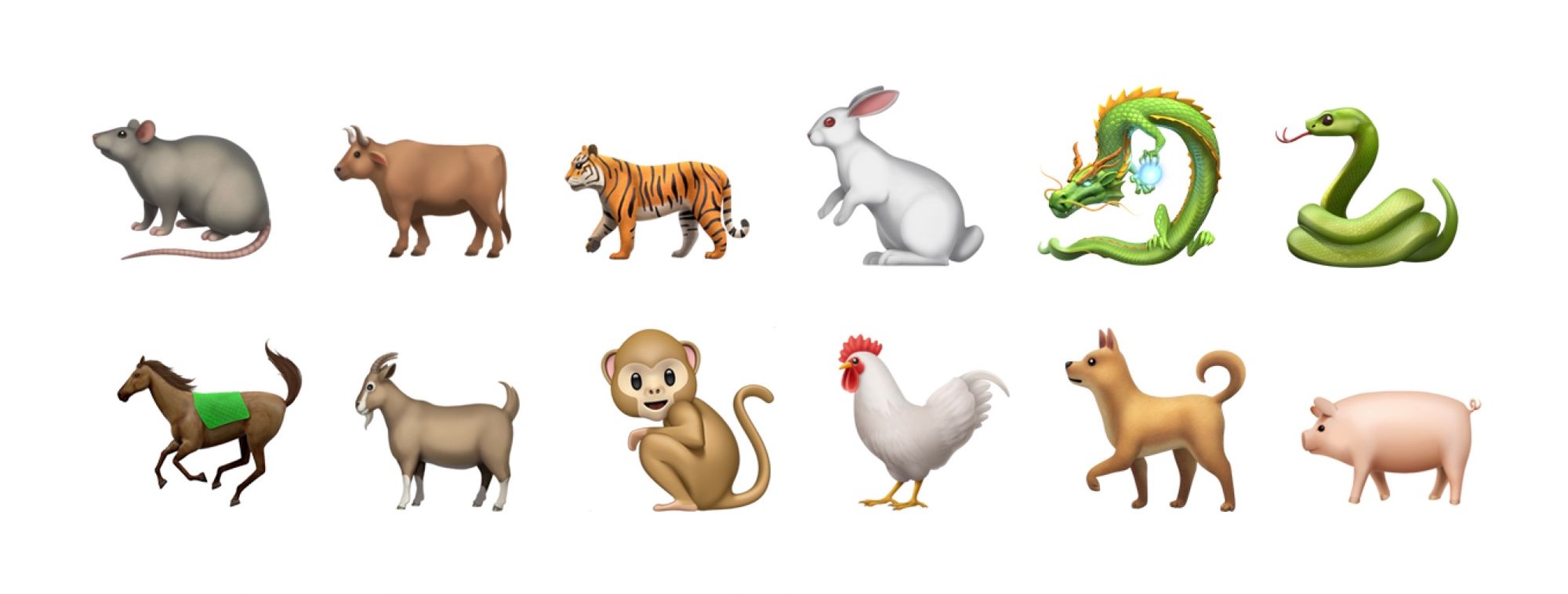
Google's emoji set in has seen numerous designs adorn the emoji keyboard over the years, with the latest iteration settling on a cute assortment of animals, many reminiscent of earlier designs found on Android.
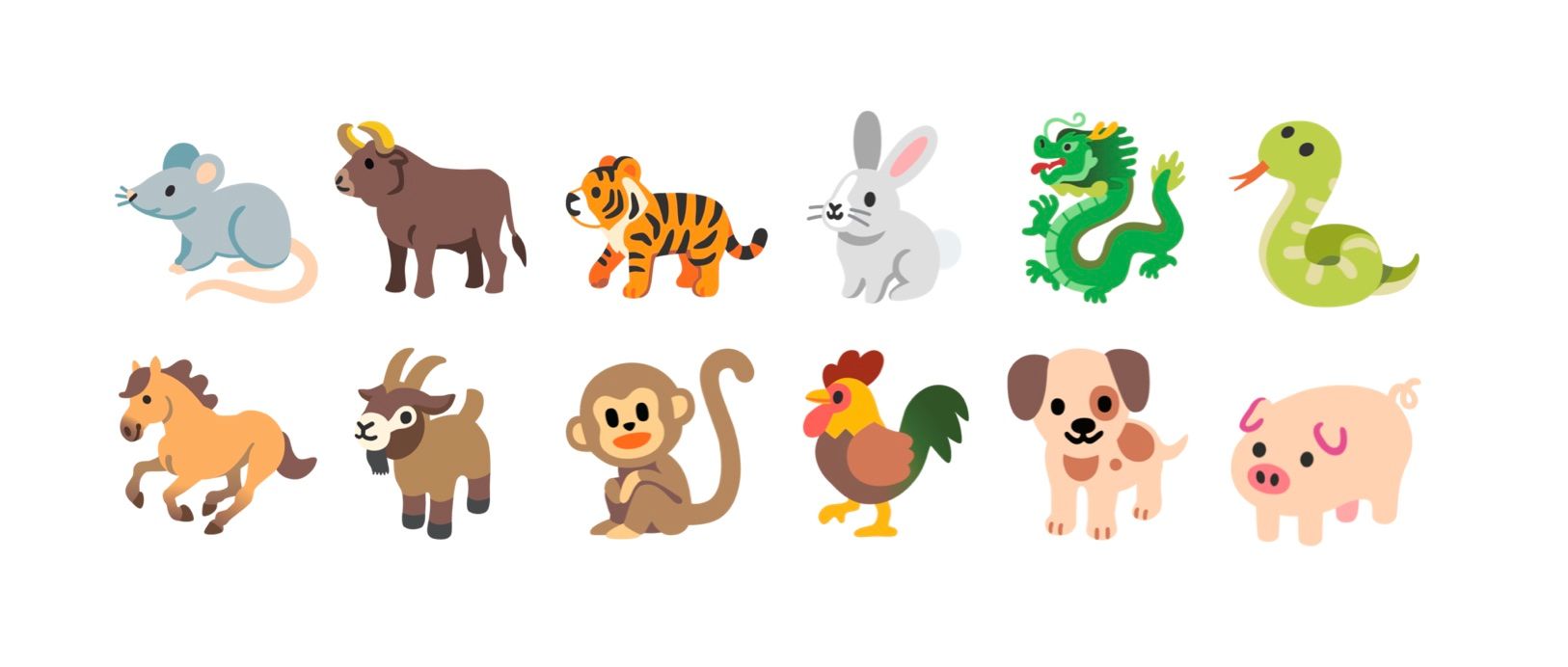
As with all emojis, the design for every animal varies by platform, so these will look different on a Samsung phone, a PC running Windows, and also in various apps that implement their own emoji art such as Twitter, Facebook and WhatsApp for Android.
One Emoji You Can't Use 🇹🇼
Chinese New Year is celebrated in many countries around the world, but in particular in numerous Southeast Asian countries including, but not limited to:
Of these countries, Taiwan stands out as one whose emoji flag cannot be used in mainland China.
Chinese model iPhones are setup in a way that removes the 🇹🇼 Taiwan flag from the emoji keyboard, even if you set the region to a non-China locale.
iOS devices purchased in China will show the Taiwanese flag emoji as a missing character if you copy and paste it from other sources.
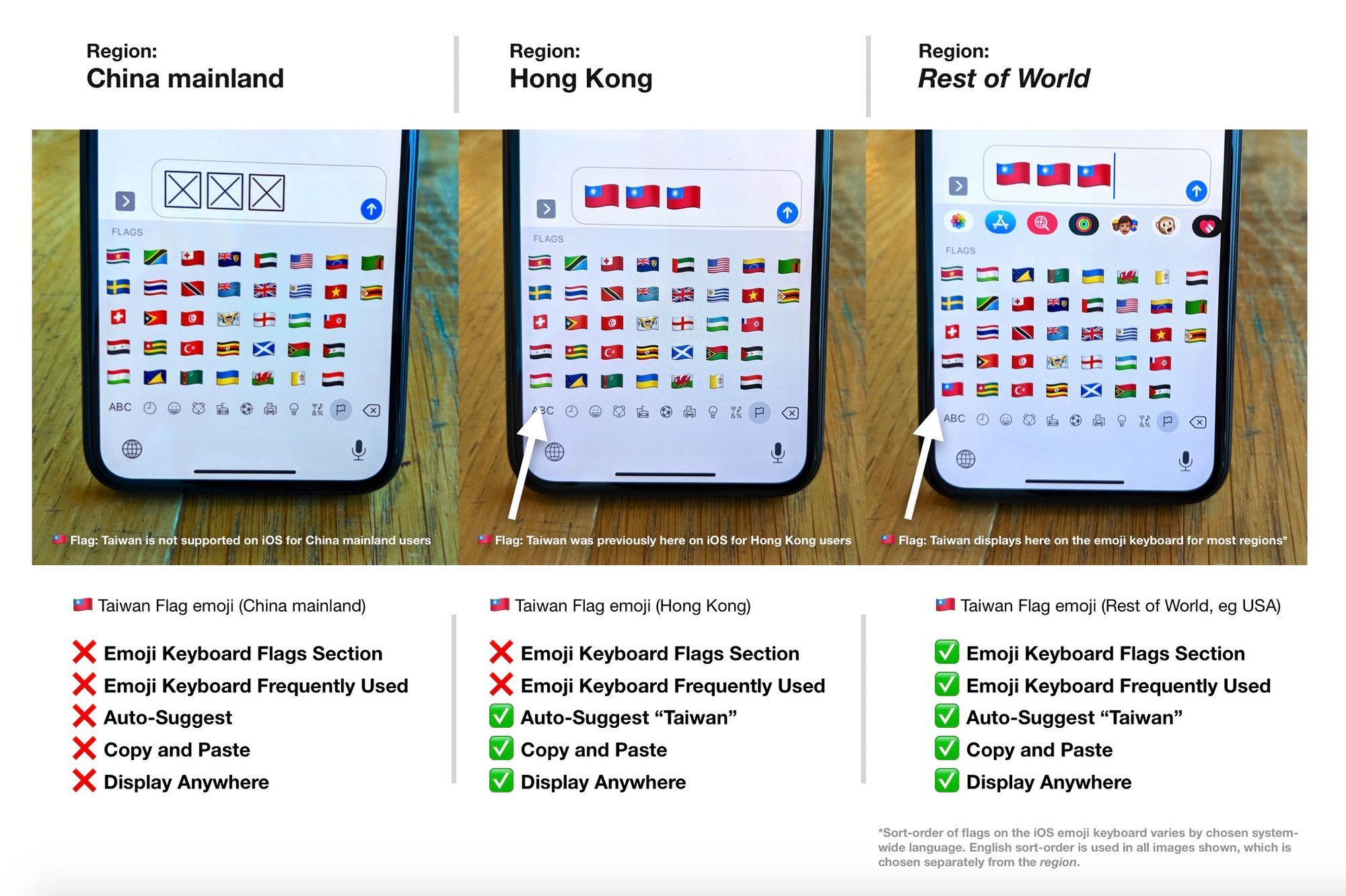
Hong Kong model iPhones (and/or iOS devices were the region is set to Hong Kong in software) hide this emoji, but will still let show if copied and pasted, and/or typed and chosen from the emoji autosuggest feature.
Other countries around the world continue to show this flag the same way as any other supported emoji.
WeChat Emojis ✳️
It's worth pointing out that for all that Unicode does to standardize an emoji set that can be used on all platforms, it's of less importance when both parties use the same app.
For many people celebrating Chinese New Year, WeChat will be the app of choice to do so. With over 1 billion users, WeChat is a juggernaut of communication and has its own stickers that look a lot like other emojis, but don't rely on any special encoding.
Looking at WeChat's default sticker pack, you might notice two things:
- Not all of these correspond to the standard emojis available on all platforms
- Some of these look VERY similar to Apple designs. In fact, a few of them appear to have literally been copy and pasted from Apple's (copyrighted) emoji font 😱
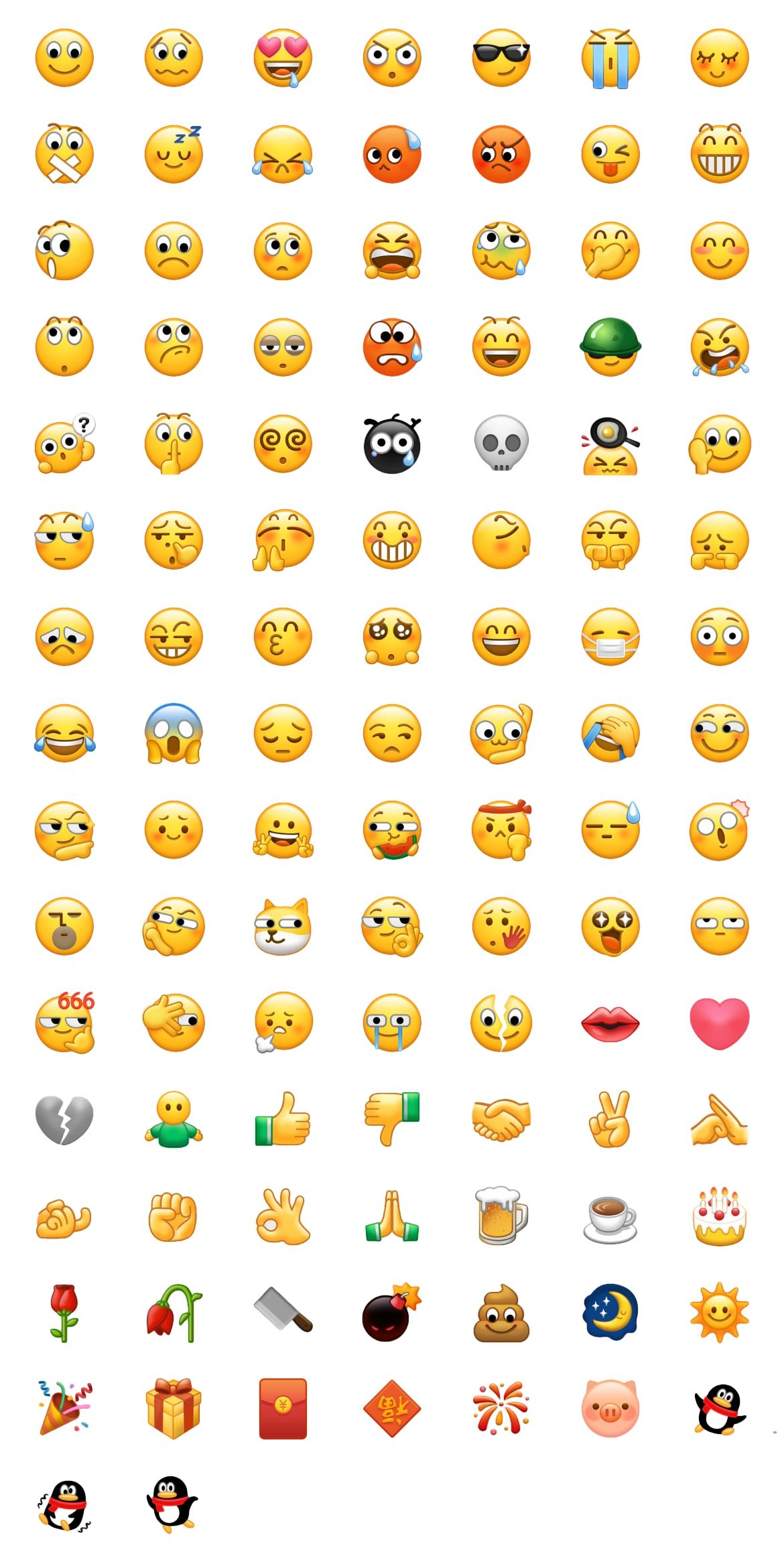
Like many apps, WeChat uses a shortcode system to insert these smileys, whereby typing [Happy] inserts a smiling face, and [Packet] inserts a Red Packet.
A custom picker lets you insert them too, just like the system-wide emoji keyboard.
As with any custom emote or emoticon system, WeChat isn't limited to showing approved emojis in this list. As they only work with WeChat itself, any number can be added or removed at the whim of Tencent.
How to send a red packet emoji 🧧
You can send a red packet emoji in a few different ways:
- Insert the 🧧 Red Envelope emoji from the system-wide emoji keyboard, or copy and paste it from the web
- When in WeChat, type [packet] to have the WeChat version of this sticker appear
- Twitter also has 'custom emojis' which appear in a time-limited window for many public events. Type #ChineseNewYear or #LunarNewYear close to February 12, and a custom graphic will (usually) appear
